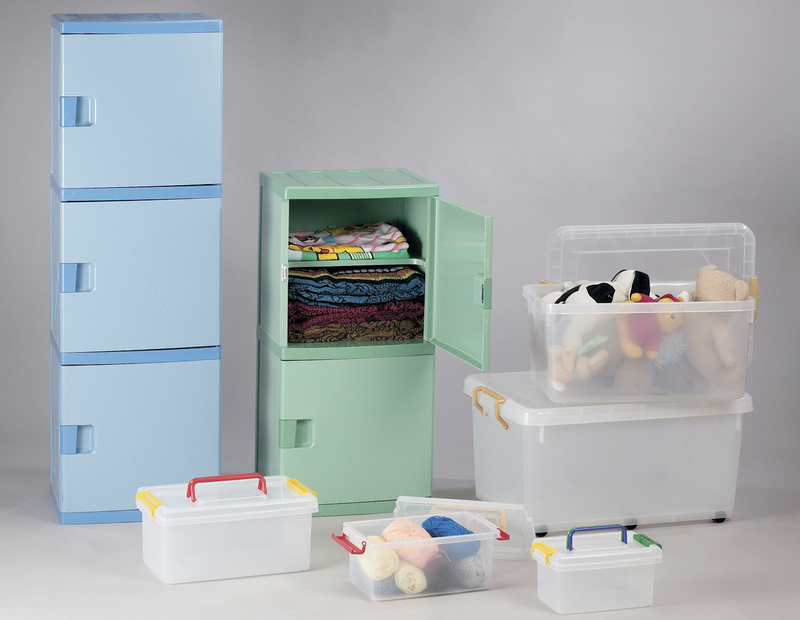Experts Share Their Knowledge: Long-Term Storage for Your Sofa
Posted on 16/06/2025
Experts Share Their Knowledge: Long-Term Storage for Your Sofa
Are you planning a move, downsizing, or simply need to keep your beloved couch safe during a long renovation? Regardless of the reason, long-term storage for your sofa is a task that requires careful consideration and expertise. To help you preserve your sofa's condition and value, we've consulted with industry professionals, restoration experts, and efficient storage facility managers. Learn the best strategies for protecting your furniture investment, prevent damage, and ensure your couch is ready for use when you need it again.
Understanding the Importance of Proper Sofa Storage
Sofas are more than just a place to sit--they often represent a significant investment and a source of comfort in your home. Unfortunately, storing a sofa incorrectly for long periods can result in mold growth, fading, tears, and even structural damage. According to Karen Mills, a furniture preservation specialist, "long-term couch storage requires planning, the right materials, and proper environment." In this comprehensive guide, we'll break down the crucial steps, common mistakes, and expert recommendations for keeping your sofa in top shape.
Why Long-Term Couch Storage Matters
- Maintains sofa integrity and value
- Prevents costly repairs or replacement
- Ensures hygiene and cleanliness
- Protects from pests, moisture, and extreme temperatures

Preparing Your Sofa for Long-Term Storage
The first step to effective sofa storage solutions lies in how you prepare your furniture. Experts agree that thorough preparation reduces risks and makes it easier to retrieve your couch without surprises later.
1. Clean Your Sofa Thoroughly
Before storing your sofa for the long term, cleaning is essential. Dust, food particles, pet hair, and spills can attract pests or promote mold growth if left unchecked. Depending on your sofa's material:
- Fabric upholstery: Vacuum thoroughly, treat stains with appropriate fabric cleaner, and allow it to dry completely.
- Leather sofas: Wipe down with a leather-safe cleaner or damp cloth, apply conditioner, and ensure it's fully dry before covering.
- Wooden accents: Clean and polish any wood trim to prevent drying, cracking, or warping from storage conditions.
2. Disassemble If Possible
Rachel Green, a logistics coordinator at a major moving company, recommends:
Disassemble your sofa wherever possible, including removing cushions, legs, and any detachable parts. This reduces stress on joints and fabric and also makes transportation and placement in storage easier.
- Label all screws and parts with tape or in small bags taped to the relevant section
- Pack cushions separately in breathable covers
- Keep a record or diagram for easy reassembly
3. Use Proper Protective Materials
Do not use plastic wrap directly on your sofa for extended periods--it can trap moisture and encourage mildew. Instead, experienced storage professionals suggest:
- Breathable covers or furniture blankets
- Cotton sheets for extra protection against dust
- Padded wrapping for armrests and corners
Tip: Wrap each part separately and secure gently with tape or twine to avoid compression marks.
Choosing the Right Storage Environment
Should You Opt for Climate-Controlled Storage?
The storage environment can make or break your couch's future usability. According to Sarah Lee, a furniture storage facility manager: "If you plan to store your sofa for more than a few months, a climate-controlled unit is strongly recommended. Extreme temperatures and humidity can accelerate material breakdown, fade fabric, and warp frames."
- Climate-controlled storage units maintain a consistent temperature and reduce humidity--ideal for leather, suede, and delicate upholstery sofas.
- Non-climate controlled units may suffice for sturdy, less delicate designs stored for a short period, but always check for protection from leaks and direct sunlight.
Key Features of the Best Sofa Storage Facilities
- Cleanliness: Check for routine cleaning, pest control, and no visible mold.
- Accessibility: Ensure you can easily move your sofa in and out without risk of bumping or scraping.
- Security: Look for CCTV, alarms, and gated access for peace of mind.
- Ventilation: Helps prevent accumulation of musty odors and moisture.
Alternatives to Traditional Storage
If a storage locker is out of reach, consider these alternatives, but always ensure adequate protection:
- Basements (only if dry and well-ventilated)
- Attics (avoid extreme heat or cold)
- Trusted friend or family member's clean garage (climate considerations apply)
Expert Tips for Long-Term Couch Preservation
How to Store Your Sofa to Prevent Common Problems
- Elevate your couch: Use wooden pallets or plastic risers to keep it off the ground, protecting from moisture and pests.
- Avoid stacking heavy items:
- Do not place boxes or objects on top--compression can leave permanent dents in cushions or frames.
- Allow for airflow: Position your wrapped sofa with a few inches of space on all sides.
- Check periodically: Visit your storage unit every few months to inspect for signs of mold, pests, or shifting of protective covers.
Common Mistakes with Storing Sofas Long-Term
Even with the best intentions, certain errors can lead to disappointing outcomes when you finally retrieve your sofa. Avoid these mistakes:
- Skipping the cleaning step - Dirt left behind can become permanent stains or attract insects.
- Using plastic wrap directly on upholstery - Traps moisture, causing mold and mildew.
- Not disassembling where possible - Leads to strain on the frame and upholstery, warping or stretching materials.
- Placing sofa on bare ground - Encourages moisture absorption and pest invasion.
- Neglecting climate control - Leads to fading, cracking, and material breakdown, especially for leather sofas.
Special Considerations for Different Sofa Types
Storing Leather Sofas
Leather couches are particularly vulnerable to improper storage. According to storage expert James Merton, leather can crack or become discolored if not protected from temperature swings and dryness.
- Apply leather conditioner before wrapping to maintain suppleness.
- Use a breathable cloth cover only--avoid old blankets that can shed or stain.
- Never store in damp or excessively dry spaces.
Storing Fabric Sofas
Fabric-upholstered sofas also require careful handling:
- Clean and thoroughly dry before wrapping to avoid mildew.
- Consider a moisture-absorbing desiccant packet inside storage covers.
- Keep away from direct sunlight which can cause fading even through thin cloths or unit windows.
Storing Antique or Specialty Sofas
Antique or heirloom sofas can be especially fragile. Consult a conservator if in doubt. Techniques may include:
- Custom-made archival covers
- No direct contact with packing tape or harsh wraps
- Include a note inside for air circulation and periodic checks
Retrieving and Reusing Your Sofa After Storage
When it's finally time to bring your sofa home, proper handling ensures a smooth transition back to everyday use.
- Inspect the sofa while still wrapped for any signs of mold, pests, or damage.
- Allow it to acclimatize to your home's temperature before removing covers.
- Vacuum and clean again, especially fabric or crevices.
- Reassemble carefully, following your notes and diagrams from disassembly.
- Air out for several hours to freshen any musty odors acquired during storage.

Frequently Asked Questions on Long-Term Sofa Storage
How long can I store a sofa safely?
With proper preparation and ideal storage conditions, you can store a sofa for years. However, it's best to check on it and recondition materials every 6-12 months.
Will my sofa smell after storage?
If you use breathable covers, avoid damp environments, and clean it beforehand, odors should be minimal. Odor-absorbing packets and periodic airing help prevent mustiness.
Can I stand a couch on its end to save space?
Experts advise against this. Storing a sofa upright can lead to frame warping and uneven stress on the joints, especially over long periods. Always store flat and fully supported.
Is insurance necessary for stored furniture?
Many storage facilities offer insurance, but double-check your homeowner's or renter's policy for coverage. For high-value or antique couches, additional insurance may be prudent.
Conclusion: Preserve Your Investment With Smart Storage
Long-term storage solutions for sofas are about much more than stashing your couch in a spare space and forgetting about it. The expert advice outlined above ensures that your sofa remains beautiful, clean, and functional--ready for many more years of comfort.
Remember: Preparation, the right materials, a suitable environment, and regular checks are the keys to success. By taking these steps, you will protect your investment and avoid the disappointment and costs of furniture damage.
For more guidance on sofa storage, or to find reputable climate-controlled storage near you, consult a local furniture expert or trusted storage provider. Your sofa deserves the best care, even when you're not using it!
Summary of Expert Recommendations for Couch Storage
- Clean and dry thoroughly before storage
- Disassemble and wrap with breathable materials
- Choose climate-controlled storage when possible
- Elevate furniture off the ground
- Avoid stacking and ensure airflow
- Inspect periodically and recondition after retrieval
By following these expert-approved strategies, your long-term sofa storage experience will ensure lasting comfort and value. Don't leave your couch's future to chance--store it the smart way.



